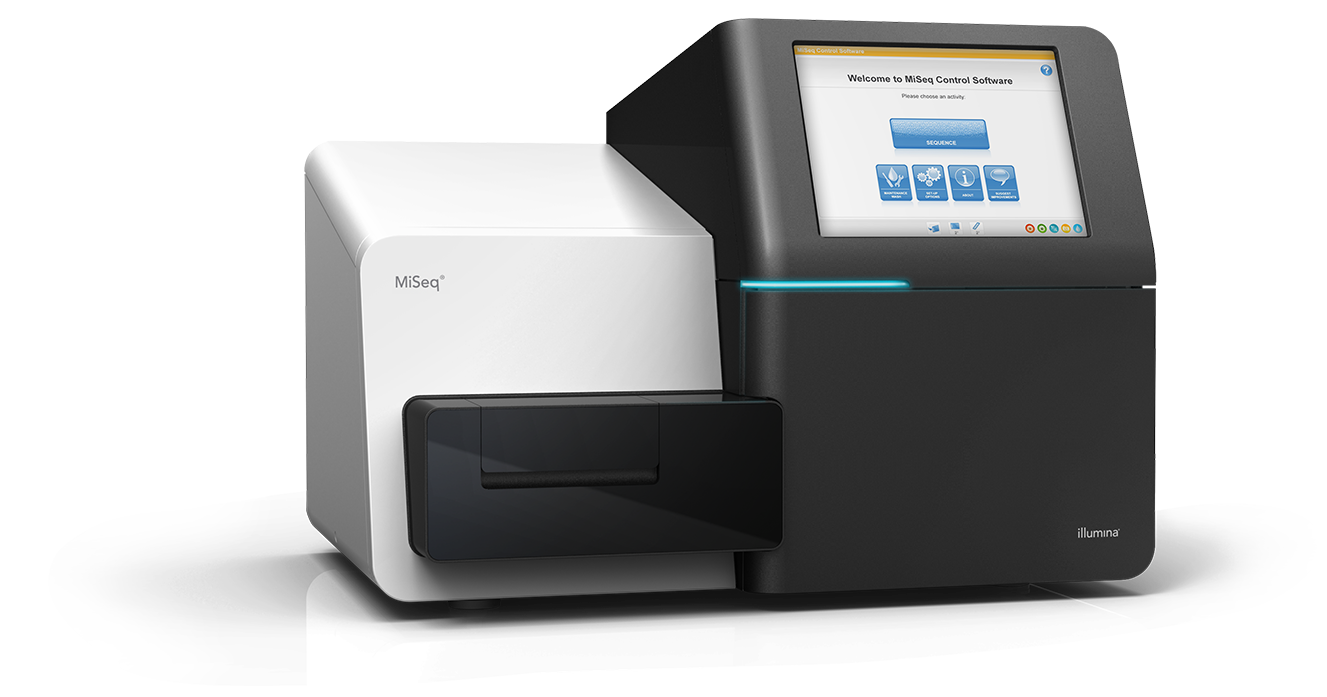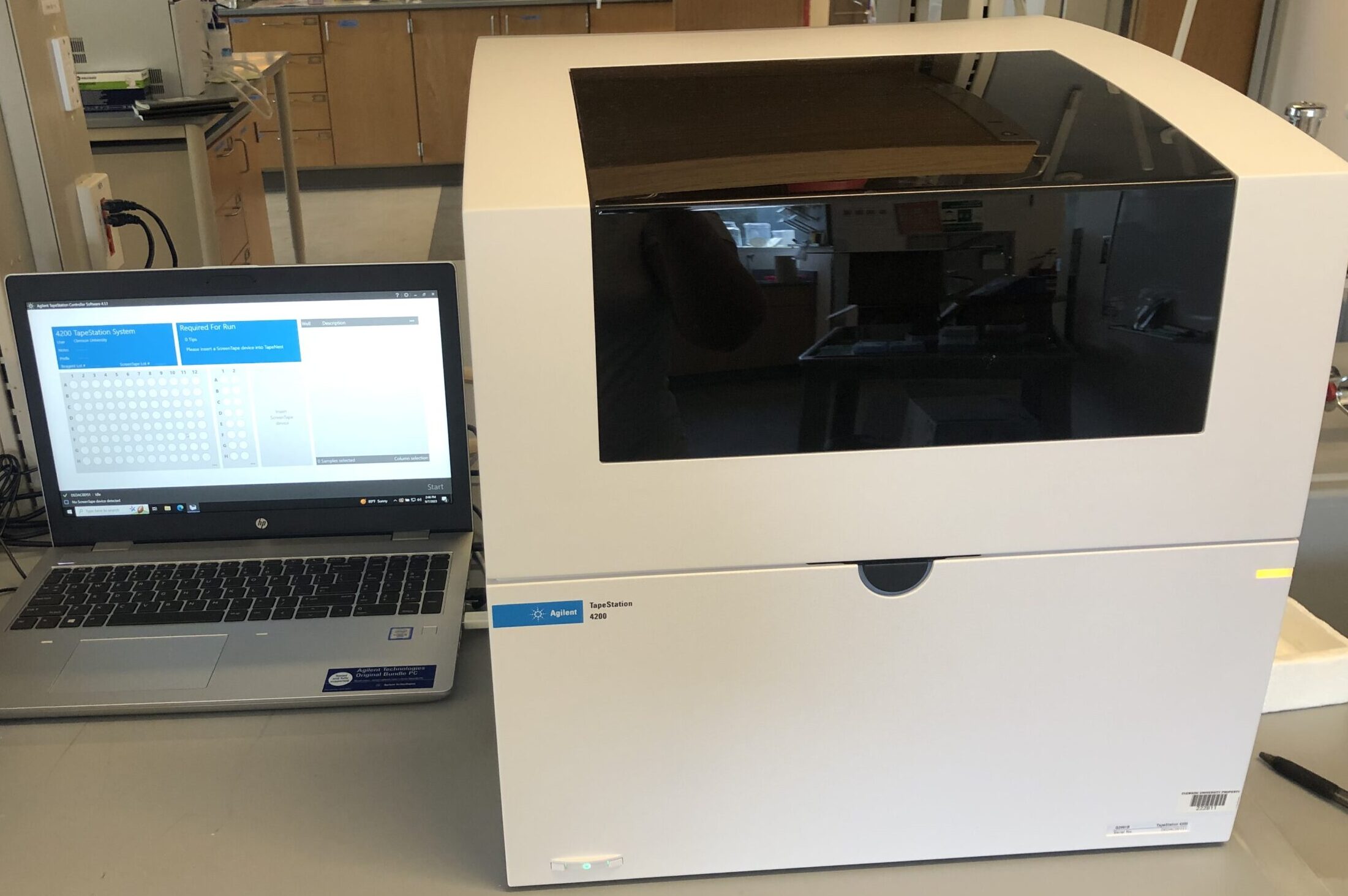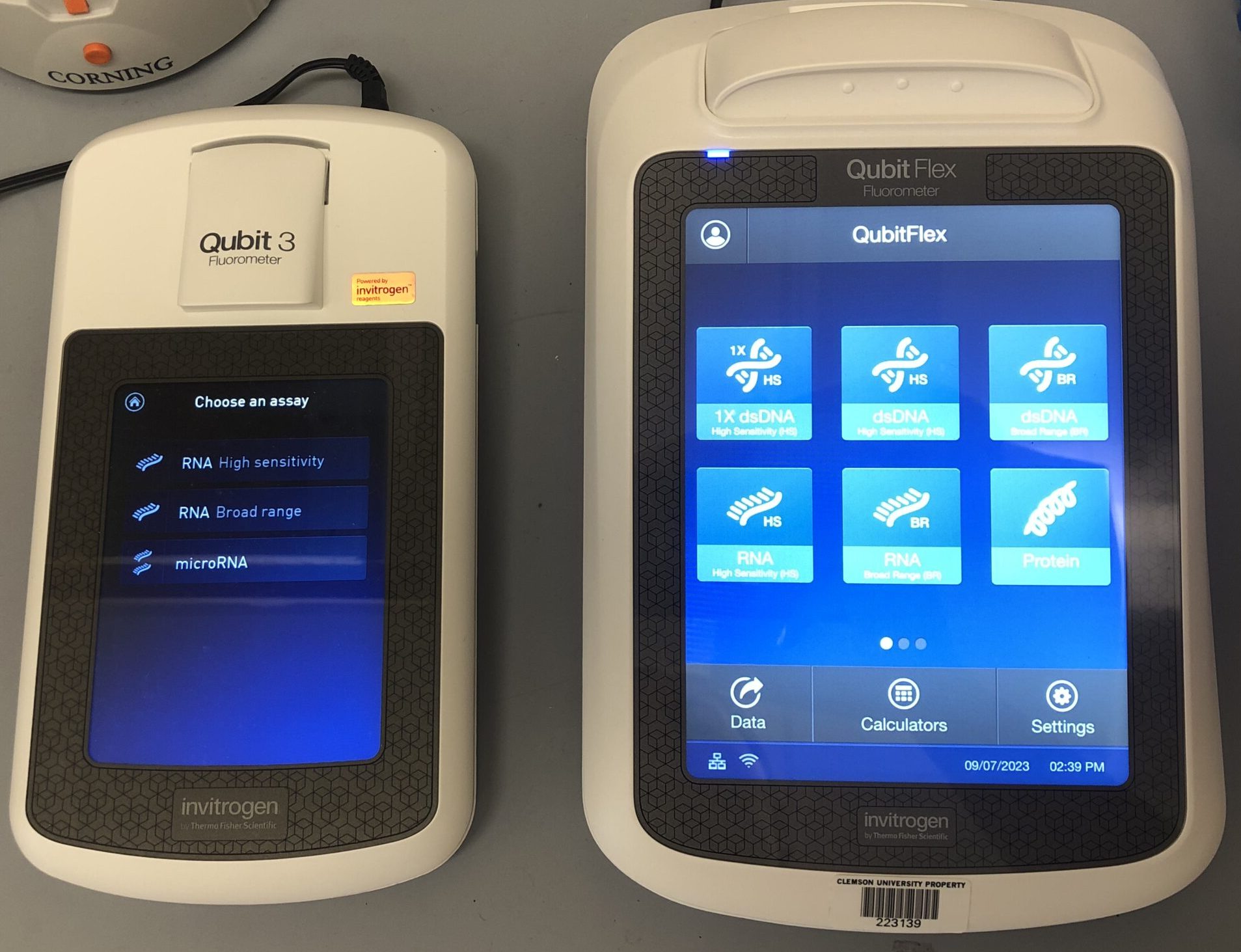Genomics Services
The suite of short-read Illumina sequencers available at Clemson University allows us to harness the applications of Illumina’s MiSeq, NextSeq 2000 and NovaSeq X to suit your sequencing needs. Our relationship with external genomic facilities enables us to facilitate long-read sequencing using PacBio technology.
Illumina sequencers

MiSeq
MiSeq applications include targeted gene, small genome, amplicon, and 16S sequencing. As an available sequencing platform on Clemson’s main campus, we can facilitate experimental design and use of the Illumina MiSeq bench-top sequencer for your microbial studies.

NextSeq 2000
NextSeq 2000 applications include gene expression profiling (RNAseq), exome sequencing, and whole-genome sequencing. At the heart of our facility, the NextSeq 2000 allows for high-throughput sequencing with a tunable turnaround time and data output. The NextSeq can be used for QC of libraries included in a large-scale project before sequencing on the NovaSeq X.

NovaSeq X
Through our relationship with the College of Science’s Center for Human Genetics in Greenwood, SC, we can leverage the power and cost effectiveness of Illumina’s NovaSeq X to suit the needs of large-scale sequencing projects. Key applications of the NovaSeq X include whole-genome, whole-exome, and whole-transcriptome sequencing.
To determine your desired sequencing coverage, use one of the sequencing coverage calculators from Illumina and New England Biolabs. For further assistance, contact us.
For your long-read sequencing needs, Pacific Biosciences sequencing can be completed through our relationship with external genomics facilities. Please contact us so we can facilitate your long-read sequencing projects.

Agilent TapeStation 4200
The Agilent TapeStation is an automated electrophoresis system that has both DNA and RNA applications. Quantify and size DNA samples. Additionally, RNA samples can be checked for quality by generating an RNA Integrity Number (RIN). The TapeStation uses as little as 1mL of sample for quality control analysis. The fully automated system can handle 1-96 samples at a time making it perfect for both small and large sample sets. The TapeStaiton can be utilized for NGS library preparation and NGS workflows.
Invitrogen Qubit and Qubit Flex Fluorometer
The Qubit benchtop fluorometer is designed to accurately measure DNA, RNA, and protein quantity with as little as 1mL of sample. The Qubit also easily measures RNA integrity and quality. The Qubit Flex shares common features with the Qubit but allows for the analysis of 8 samples at a time and is perfect for the quantification of a large numbers of samples. The Qubit and Qubit Flex fluorometers can be utilized for DNA library QC in NGS workflows.

Services Offered
RNA Isolation
Obtaining high-quality RNA is a crucial step in performing molecular techniques such as RT-qPCR, transcriptome analysis using NGS, digital PCR, and cDNA library construction. The RNA isolation protocol can be tailored to specific sample types and optimized for varying storage conditions.
DNA Isolation
Downstream applications of DNA isolation may include DNA sequencing, DNA bioanalyzer analysis and PCR. The isolation protocol may vary with sample types.
HMW DNA Isolation
Long read sequencing protocols depends on high-quality DNA samples. We aim to isolate HMW-DNA samples with mean fragment lengths of 50 kb or higher. The isolation protocol may vary with sample types.
Chromatin Immunoprecipitation
Commonly used to test whether a protein of interest associates with a target DNA site in vivo. ChIP followed by next-generation sequencing enables the mapping of binding loci throughout the genome with a high resolution. When combined with the transcriptomics data, ChIP-seq can be used to determine the regulon of a regulatory protein. Additionally, ChIP-seq can provide clues about potential co-regulatory proteins.
Agilent 2100 Bioanalyzer
The 2100 Bioanalyzer system features automated electrophoresis for nucleic acid quality control. Applications include DNA size and quantity, RNA quality check with RIN and protein analysis. The 2100 Bioanalyzer is utilized for DNA library QC in NGS workflows.
NGS Library Preparation
The NGS library preparation utilizes Illumina or other supported kits based on quantity and physical characteristics of RNA or DNA source material as well as the desired application. Library preparation involves generating a collection of DNA fragments for sequencing.
KAPA Library Quantification
KAPA library quantification is qPCR-based quantification of NGS libraries prior to pooling and used after pooling. This method enables accurate pooling of libraries for multiplexed sequencing and can also be performed after pooling as a confirmatory step before sequencing. KAPA library quantification is recommended in conjunction with Qubit and Bioanalyzer analysis.
Blue Pippin Prep
The Blue Pippin is utilized for DNA size selection (up to 50kb) for NGS. Desired target sizes or ranges of sizes are entered in software and fractions are collected in buffer. Up to 5 samples/gel cassette may be run, with no possibility of cross contamination.
“A well-functioning Genomics & Bioinformatics Facility is essential to successful research at Clemson.”
— Dr. David Freedman
Department of Environmental Engineering and Earth Sciences
Clemson University
